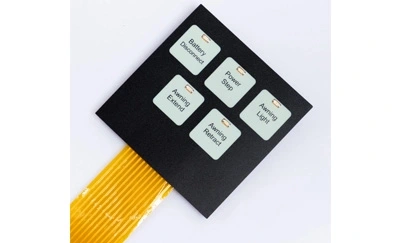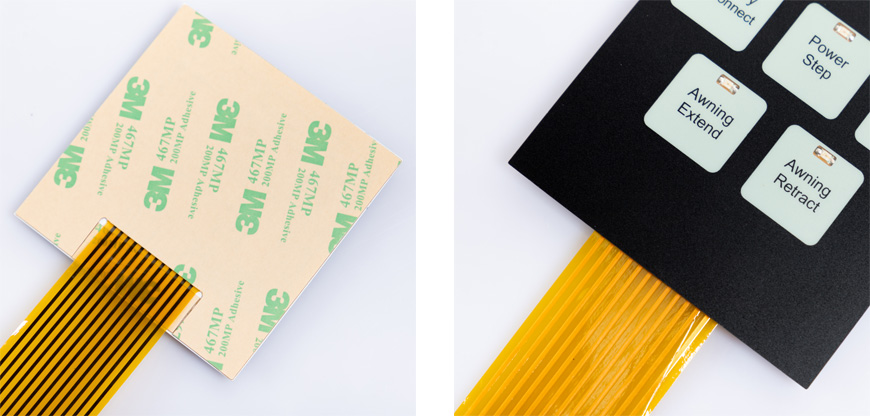
In today's digital age, we interact with electronic devices more than ever before. From smartphones and remote controls to medical equipment and industrial machinery, the interface between humans and machines plays a critical role in user experience. One often-overlooked component of these interfaces is the membrane keypad switch. In this comprehensive guide, we will explore everything you need to know about membrane keypad switches, from their construction to their applications and advantages.

1. Introduction to Membrane Keypad Switches
2. How Membrane Keypad Switches Work
Understanding the Basic Structure
Mechanism of Keypress Detection
3. Types of Membrane Keypad Switches
Tactile Membrane Keypads
Non-Tactile Membrane Keypads
Metal Dome Membrane Keypads
4. Advantages of Using Membrane Keypad Switches
Durability and Longevity
Customization Options
Cost-Effectiveness
5. Applications of Membrane Keypad Switches
Consumer Electronics
Medical Devices
Industrial Control Panels
6. Membrane Keypad vs. Mechanical Keyboard: A Comparison
Performance and Feedback
Noise Levels
Maintenance and Lifespan
7. Design Considerations for Membrane Keypads
Material Selection
Graphic Overlays and Printing
Backlighting Options
8. Membrane Keypad Manufacturing Process
Screen Printing
Assembly and Integration
Quality Control
9. Maintenance and Care Tips
Cleaning and Hygiene
Preventing Wear and Tear
10. Future Trends in Membrane Keypad Technology
Integration with Flexible Electronics
Improved Haptic Feedback
11. Case Studies: Real-World Applications
Smart Home Control Panels
Medical Diagnosis Devices
12. Conclusion: Embracing the Potential of Membrane Keypad Switches
13. Frequently Asked Questions (FAQs)
How long do membrane keypad switches typically last?
Can membrane keypads be used in outdoor environments?
Are membrane keypads customizable in terms of design and layout?
What are the main challenges in cleaning and maintaining membrane keypads?
How do membrane keypads contribute to cost savings in industrial applications?
Membrane keypad switches are a crucial component of various electronic devices, offering a reliable and user-friendly interface for input and control. Despite their ubiquity, these switches often go unnoticed, overshadowed by flashier technology components. However, their significance cannot be understated.
At their core, membrane keypad switches consist of multiple layers of flexible materials, typically including polyester, adhesive, and conductive ink. When a user applies pressure to a specific area on the keypad, it deforms the top polyester layer, causing it to make contact with the conductive ink layer beneath. This contact completes an electrical circuit, registering a keypress.
A typical membrane keypad consists of the following layers:
Top Graphic Overlay
Spacer Layer
Conductive Circuit Layer
Bottom Support Layer
Membrane keypads can have two primary types of feedback:
Tactile Feedback: Users feel a physical response (click or snap) when pressing a key.
Non-Tactile Feedback: Keypresses are registered without physical feedback.
Membrane keypads come in several varieties, each suited to different applications and user preferences.
Tactile Membrane Keypads
Tactile membrane keypads offer a satisfying click or snap sensation when pressed, making them ideal for applications where precise input is essential.
Non-Tactile Membrane Keypads
Non-tactile membrane keypads are quieter and do not provide physical feedback. They are often used in environments where noise reduction is crucial.
Metal Dome Membrane Keypads
Metal dome membrane keypads incorporate metal domes beneath the top layer, providing a tactile feel and extended durability.
Durability and Longevity
Membrane keypads are known for their durability, withstanding millions of keypresses without failure. This longevity makes them suitable for critical applications.
Customization Options
Designers can customize membrane keypads with various graphics, colors, and layouts, offering flexibility in product design.
Cost-Effectiveness
Compared to mechanical switches, membrane keypads are cost-effective, making them an attractive choice for manufacturers.
Membrane keypads find applications in a wide range of industries and devices, including consumer electronics, medical devices, and industrial control panels.
Consumer Electronics
Smartphones, remote controls, and home appliances often rely on membrane keypads for their intuitive interfaces.
Medical Devices
Medical diagnostic equipment and patient monitoring devices utilize membrane keypads for user-friendly interaction.
Industrial Control Panels
Industrial machines and equipment control panels benefit from the durability and reliability of membrane keypads.
When choosing between membrane keypads and mechanical keyboards, several factors come into play.
Performance and Feedback
Mechanical keyboards provide a more tactile and audible feedback, while membrane keypads are quieter and offer non-tactile feedback.
Noise Levels
Mechanical keyboards can be noisy, which may not be suitable for quiet environments.
Maintenance and Lifespan
Membrane keypads require minimal maintenance and have a longer lifespan compared to mechanical switches.
Designing a membrane keypad involves careful consideration of materials, graphics, and backlighting options.
Material Selection
Choosing the right materials ensures the keypad's durability and functionality.
Graphic Overlays and Printing
Graphic overlays can be customized to convey branding and user instructions effectively.
Backlighting Options
Backlit membrane keypads enhance visibility in low-light conditions.
The production of membrane keypads involves several stages, including screen printing, assembly, and rigorous quality control checks.
Screen Printing
Conductive ink is screen-printed onto the keypad's circuit layer with precision.
Assembly and Integration
Layers are assembled and integrated into the final product, ensuring seamless operation.
Quality Control
Stringent quality checks ensure that every membrane keypad meets the required standards.
To prolong the life of membrane keypads, proper maintenance and care are essential.
Cleaning and Hygiene
Regular cleaning with mild solutions helps maintain hygiene and functionality.
Preventing Wear and Tear
Avoiding excessive force during keypresses and protecting against liquids can prevent wear and tear.
As technology advances, membrane keypad switches are expected to evolve as well.
Integration with Flexible Electronics
Flexible electronics will enable more innovative and ergonomic keypad designs.
Improved Haptic Feedback
Advancements in haptic technology will enhance the tactile experience of membrane keypads.
Let's explore a couple of real-world scenarios where membrane keypads play a pivotal role.
Smart Home Control Panels
Membrane keypads in smart home control panels provide a user-friendly interface for homeowners.
Medical Diagnosis Devices
In the medical field, membrane keypads ensure precise input in diagnostic equipment.
In conclusion, membrane keypad switches may not always be in the spotlight, but they are the unsung heroes of user interfaces. Their durability, customization options, and cost-effectiveness make them indispensable in a wide range of applications. As technology continues to advance, we can expect even more innovative uses for these reliable components in the future.
How long do membrane keypad switches typically last?
Membrane keypad switches can typically withstand millions of keypresses and have a long lifespan, making them durable for various applications.
Can membrane keypads be used in outdoor environments?
Yes, membrane keypads can be designed to be waterproof and weather-resistant, making them suitable for outdoor use.
Are membrane keypads customizable in terms of design and layout?
Yes, membrane keypads offer a high degree of customization in terms of graphics, colors, and layouts to suit specific product designs.
What are the main challenges in cleaning and maintaining membrane keypads?
The main challenges in cleaning and maintaining membrane keypads include avoiding harsh cleaning agents, preventing liquid ingress, and minimizing wear and tear from excessive force.
How do membrane keypads contribute to cost savings in industrial applications?
Membrane keypads are cost-effective compared to mechanical switches, which helps reduce manufacturing costs in industrial applications.